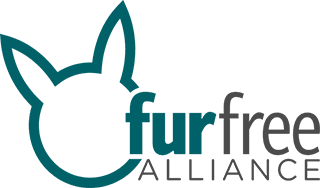
Czech Trade Inspection Authority: majority of fur items mislabelled
PRAGUE, 5 JUNE 2018 – The majority of fur items or fur-trimmed items in Czech Republic are mislabelled or not labelled at all. This alarming conclusion, that resulted from an investigation of Czech animal protection organisation Freedom for Animals in early 2017, is backed by new research results of the Czech Trade Inspection Authority (CTIA).
Between November 2017 and January 2018, the CTIA conducted an inspection to examine whether fur labelling in Czech is carried out in compliance with the existing legislation. The results are alarming: only 2 out of 12 control samples were labelled correctly. Four items did not mention real fur at all; five items were not labelled in compliance with the Regulation No 1007/2011 of the European Parliament and of the Council on textile fibre names, and one item did not contain a label in the Czech language. The items that were tested were mainly jackets and hats with fur trim or fur pom poms.
The CTIA carried out this inspection following similar research by Freedom for Animals published in March 2017. In fall 2016, the organisation inspected and documented 53 items containing real fur, with alarming results. Lucie Moravcová, anti-fur campaign coordinator of Freedom for Animals, says:
“We found out that 81 % of the samples were not labelled as containing parts of animal origin or fur as they should be according to the relevant legislation.”
For the vast majority of Czech shoppers who reject the cruelty of the fur trade, trying to buy only fake fur can be a real challenge. A public opinion poll, conducted by Focus Agency and published in spring 2017, showed that 85 % of people are not interested to buy real fur and 77 % expect to find correct information on clothing labels. Moravcová adds:
“This topic is highly delicate for customers – the majority of people in the Czech Republic does not want to buy real fur. It is important to be aware of the fact that faux fur is increasingly similar to real animal fur both in appearance and touch as well as price. Thus, these characteristics, formerly used as a way of distinguishing real fur from faux fur, are not reliable anymore. It is clear that current legislation does not guarantee proper protection for the customers. We consider the regulation insufficient and we believe it should state in detail those parts of animal origin in question. However, the regulation must be observed in the first place.”
The Czech investigation was part of an European collaboration of the member organisations of the Fur Free Alliance. Across 10 countries in Europe, 667 textile products containing real fur were inspected. 68 % of the samples did not contain the required information. In September 2017, FFA representatives presented the results of the investigation to the Members of the European Parliament after which they met with the EU commissioners in March 2018 to stress the need to improve the legislation to ensure better labelling of real fur.
More than one year after the publication of the results, European consumers are still duped into buying real fur because a large part of fur items remain mislabelled or not labelled at all, as recent findings of Four Paws in Germany and the Humane Society International in the UK have proven once more.
The Fur Free Alliance will continue to address the high levels of non-compliance and the inadequacy of the current labelling legislation across Europe. The new evidence, as a result of the CTIA inspection, will to the European Commission.
Jo Swabe, Senio Director of Public Affairs of FFA member organisation Humane Society International/Europe, says:
“The CTIA inspection confirms the results of investigations carried out by FFA member organizations in 10 European countries: huge number of products are not labelled in compliance with Article 12, Regulation on textile fibre names. We proved that the current legislation does not serve its purpose and it is time to take necessary steps to prevent further misleading practices as customers have the right to know what they are buying. The European Commission must act to ensure clearly labelled fur parts.”
The Czech society is increasingly critical towards fur production. The public concerns and concerns on animal welfare led the Czech Republic Senate to vote with an overhelming majority for a prohibition of fur farming in July 2019. The ban on fur farming will go into effect on February 1, 2019. With this decision, Czech Republic became the 9th European country to decide for a fur farming ban.





